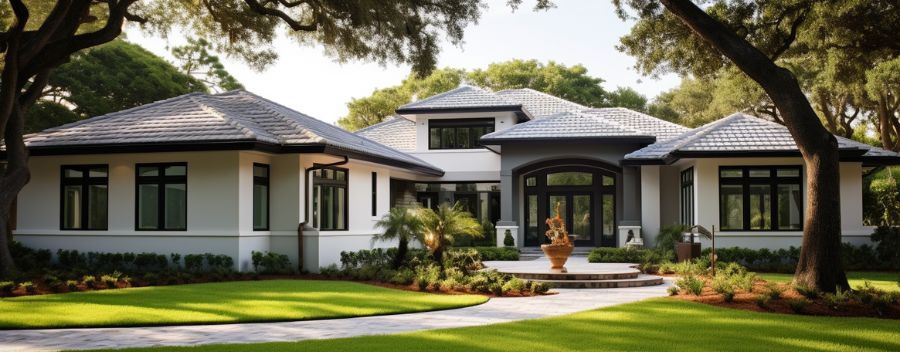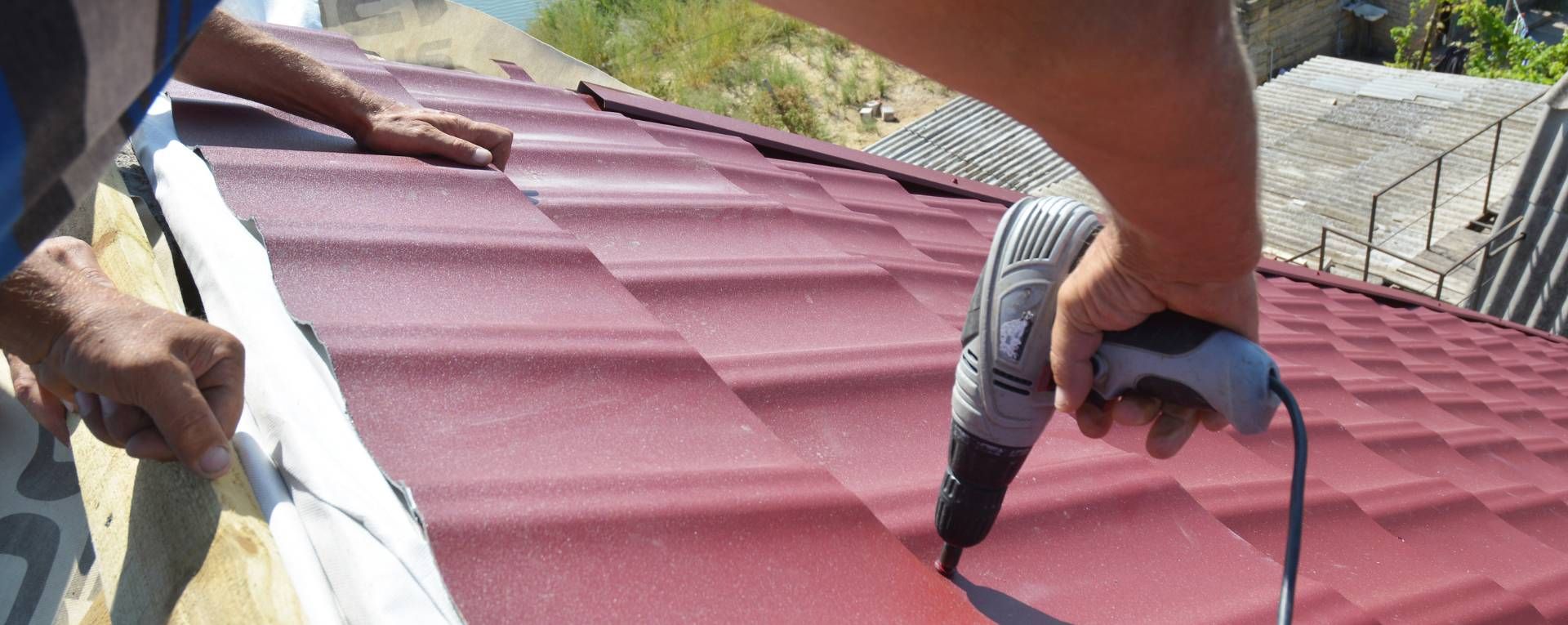What is the Average Cost of Metal Roofing in Cape Coral?
On average, installing a metal roof in Cape Coral can cost between $10,000 and $30,000, with prices ranging from $5 to $15 per square foot. The final price depends on the type of metal roofing panels used, the roof’s complexity, and local labor rates.
This guide covers everything you need to know about metal roofing cost, factors affecting pricing, its benefits, and why it is important to choose an experienced roofer, such as Boss Roofing Experts, for installation.
Factors Influencing the Average Cost of Metal Roofing in Cape Coral
Several key factors determine the total cost of installing a metal roof. Here’s some things to keep in mind:
1. Type of Metal Roofing Material
The cost of metal roofing varies depending on the type of material, its durability, and installation complexity. It is important to understand these factors so you can make the best decision for your home.
Aluminum Roofing ($6 – $14 per sq. ft.)
Aluminum is a lightweight, corrosion-resistant metal roofing option, making it ideal for coastal areas like Cape Coral, where humidity and salt exposure are high. It is generally available in standing seam panels, shingles, and interlocking sheets.
✔ Corrosion-resistant: Perfect for humid climates with heavy rainfall.
✔ Energy-efficient: Reflects sunlight, reducing cooling costs.
✔ Lightweight: Puts less stress on the home’s structure.
✔ Eco-friendly: Often made from recycled materials and fully recyclable.
Steel Roofing ($5 – $13 per sq. ft.)
Steel roofs are among the most durable and cost-effective options, available in galvanized steel, galvalume steel, and weathering steel (Corten). It is commonly installed as corrugated metal, standing seam panels, or metal shingles.
✔ Highly durable: Can withstand strong winds, hail, and severe storms.
✔ Fire-resistant: Offers excellent protection against wildfires.
✔ Variety of finishes: Can be painted or coated for extra protection and aesthetic appeal.
✔ Strong and impact-resistant: Good for areas prone to hurricanes and hailstorms.
Copper Roofing ($15 – $30 per sq. ft.)
Copper is a premium roofing material commonly used in historical buildings, luxury homes, and accent roofing areas.
✔ Unmatched longevity: Copper roofs can last over 100 years with minimal maintenance.
✔ Aesthetic appeal: Adds a luxurious and classic look to any home.
✔ Corrosion-resistant: Naturally resists rust and oxidation.
✔ Low maintenance: Does not require painting or coatings.
Zinc Roofing ($10 – $20 per sq. ft.)
Zinc is an environmentally friendly and long-lasting material that can self-heal minor scratches over time. It is often used in modern and eco-conscious home designs.
✔ Self-healing properties: Natural patina repairs minor damage.
✔ Extremely long lifespan: Can last 80-100 years or more.
✔ Highly sustainable: 100% recyclable and requires minimal processing.
✔ Rust-resistant: Does not corrode even in harsh weather.
Tin Roofing ($5 – $12 per sq. ft.)
While traditional tin roofs are rare today, modern “tin roofing” often refers to steel coated with tin and other protective layers. Tin roofs were once popular for their affordability and ease of installation.
✔ Affordable: One of the least expensive metal roofing materials.
✔ Lightweight: Does not require reinforced roof structures.
✔ Decent durability: Provides good protection when properly maintained.
Corrugated Metal Roofing ($4 – $10 per sq. ft.)
Made from aluminum, steel, or galvanized iron, corrugated metal roofing features wavy, grooved panels. Commonly used for agricultural, industrial, and budget-friendly residential applications.
✔ Budget-friendly: One of the most affordable metal roofing styles.
✔ Durable: Can last 30-50 years with proper maintenance.
✔ Lightweight and easy to install: Requires less labor cost.
Standing Seam Metal Roofing ($8 – $15 per sq. ft.)
Features concealed fasteners and raised seams, providing a sleek and modern appearance. Often made from aluminum, steel, or copper.
✔ Minimal maintenance: No exposed screws reduce the risk of leaks.
✔ Long-lasting: Lasts 50+ years with proper care.
✔ Energy-efficient: Reflective coatings lower cooling costs.
✔ Weather-resistant: Excellent for hurricane-prone areas.
By understanding the types of metal roofing and their benefits, you can choose the best option for your budget, climate, and design preferences.
2. Roof Design and Size
The complexity and square footage of your roof significantly affect costs:
- Simple gable roofs: More affordable due to easier installation.
- Complex multi-level roofs: Higher labor costs due to intricate designs.
- Roof size: The larger the surface area, the higher the overall cost.
3. Labor and Installation Costs
Labor costs vary based on experience, demand, and roof complexity:
- Standard installation: $3 – $7 per sq. ft.
- Difficult installations (steep slopes, multiple layers): Can be 20-50% more due to safety concerns.
- Tear-off costs: Removing an old roof before installing a metal roof can add $1,000 to $3,000 to the total price.
4. Geographic Location & Climate
Cape Coral’s hot and humid climate requires roofing materials that resist rust and withstand hurricanes. This demand may slightly increase material and labor costs.
5. Additional Features and Coatings
Extra features can impact pricing:
- Protective coatings: UV-resistant or anti-corrosion coatings add $1 – $3 per sq. ft.
- Insulation and underlayment: Essential for energy efficiency; costs $2 – $5 per sq. ft.
- Gutters and drainage systems: Custom installations can add $1,000 – $3,000.
Frequently Asked Questions About Metal Roofing
Q: How much is a metal roof compared to shingles?
A: Metal roofing costs 2-3 times more than asphalt shingles upfront but lasts significantly longer, making it a better long-term investment.
Q: Does a metal roof make a home hotter?
A: No. Metal roofs reflect solar heat, helping to keep your home cooler and reducing air conditioning costs.
Q: Can a metal roof be installed over existing shingles?
A: Yes, in many cases, metal roofing can be installed over shingles, saving on tear-off costs.
Q: Is a metal roof noisy during rain?
A: Not necessarily. With proper insulation and underlayment, metal roofs are no noisier than other roofing materials.
Q: Does a metal roof increase home value?
A: Yes. Metal roofs improve curb appeal, increase energy efficiency, and offer long-term durability, all of which can boost home resale value.
Q: How long does a metal roof last?
A well-maintained metal roof can last 40 to 70 years, compared to asphalt shingles which typically last 15-20 years.
Experienced Metal Roofing Professionals in Cape Coral
A metal roof is a durable, energy-efficient, and long-lasting investment for homeowners in Cape Coral. While the metal roofing cost ranges from $10,000 to $30,000, the benefits outweigh the initial expense.
At Boss Roofing Experts, we specialize in metal roofing installation, offering high-quality materials and expert craftsmanship to ensure your roof lasts for decades.
Contact Boss Roofing Experts today for a free consultation and estimate on your metal roofing project in Cape Coral!





